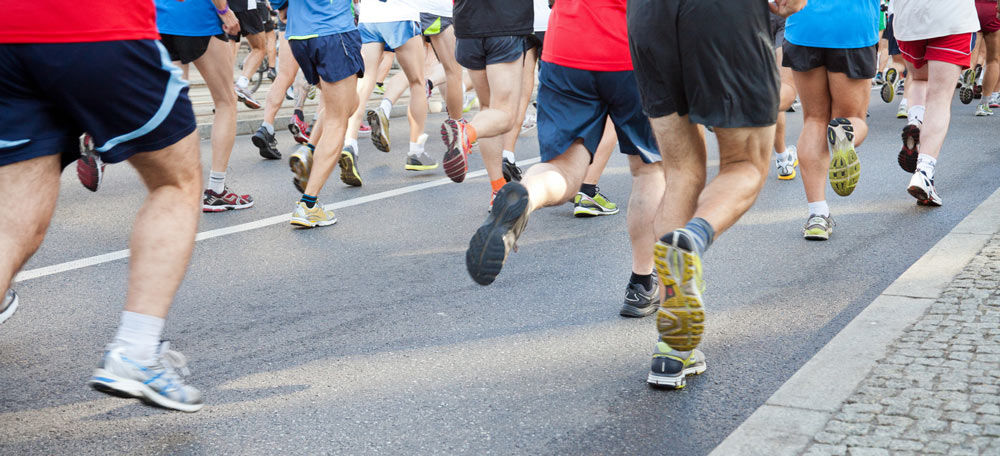Running Injuries: A 9-Point Summary

Running Injuries & Recovery
We see a multitude of running injuries in the clinic, ranging from exertion headaches with running to plantar fasciitis. It’s safe to say, as a sports chiropractic clinic, we literally treat runners from head to toe. (Sorry for the lame “dad joke.”)
While not all running injuries follow a specific pattern, the vast majority of musculoskeletal or “over-use” injuries do follow a general pattern. Most injuries stem from too much load or demand on muscles or other soft tissue. This excess load can come from increasing mileage too quickly, increasing intensity too quickly, or increasing mileage and intensity at the same time. This frequently does not allow the muscle, tendon, or ligament enough time to adapt to the increased demand of training.
Most running injuries can, therefore, be summed up in one sentence: Running load exceeds tissue capacity to tolerate or adapt.
As runners, we are very used to dealing in pain or discomfort, and we can’t always distinguish between a sore muscle after a hard run and something that is becoming an injury. The desire to constantly push the limits of our abilities means we often don’t seek sports chiropractic help as soon as we should. Here is 9-point summary to help you determine if you simply need to back off for a short period to recover or if you could benefit from sports chiropractic to speed up the healing process.
Summary of Running Injuries
Here is a 9 point summary of most running injuries and recovery:
- Runners become injured because they exceed their tissue’s capacity to tolerate load.
- Runners need to be strong enough to manage the loads experienced during running.
- Strength and conditioning in runners may improve load tolerance and performance, preventing injury.
- Running should only be stopped for as short a period as possible when injured before resuming again, unless otherwise recommended (i.e. stress fracture).
- Use the 24-hour pattern to monitor how the runner reacts to running post-injury. If pain does not subside in 24 hours, reduce the volume.
- Changing foot strike pattern may be appropriate for the treatment of certain conditions.
- Running shoes are less important than running biomechanics.
- Running retraining should start simple and expand over a period of time.
- Periods of stress and lack of up sleep may delay healing up to 60%!
Brookfield Sports Chiropractic
If you need assistance with developing a strength training routine, changing foot strike pattern, retraining your running form, or analyzing your running gait and biomechanics, we can help! Dr. Shiels has extensive training in running biomechanics, gait retraining, and frequently performs video gait analysis in the clinic. Here is more information on our Running Performance Program. If you are injured and struggling to get back to running, we can assist with that too and help speed up the recovery process. Here is more information on our treatment methods for running injuries.
 262-373-9168
262-373-9168





